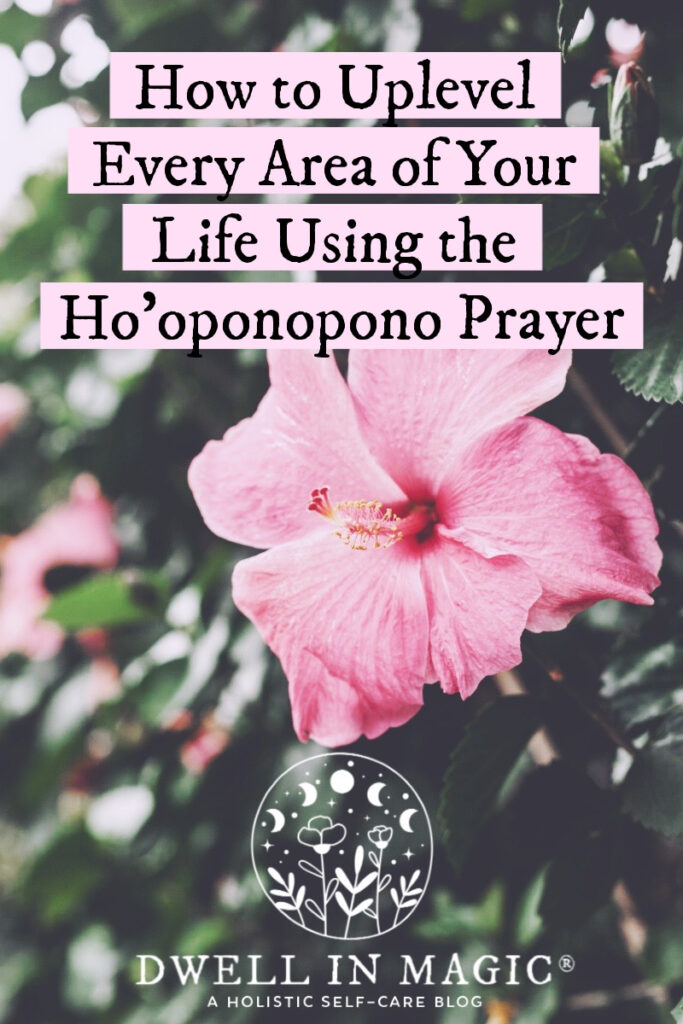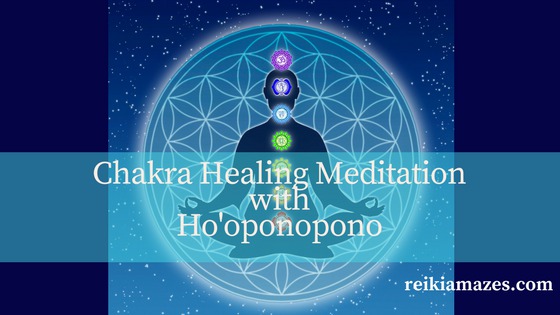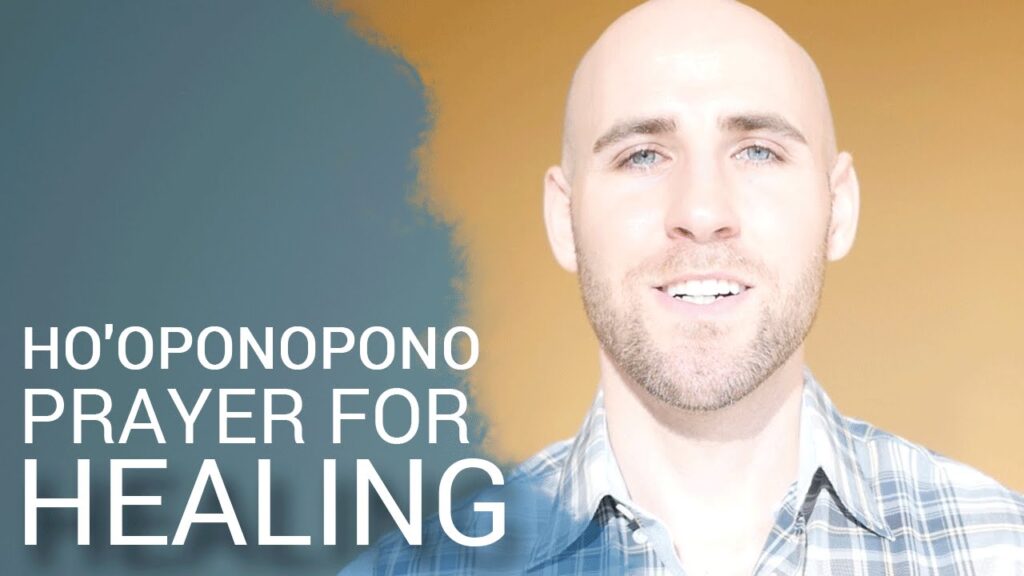Do you ever wonder if there are alternative healing methods that can be used in the health sector? Well, have you heard of Ho’oponopono? This ancient Hawaiian practice has been gaining popularity in recent years, and it offers a unique approach to healing. In this article, we will dive into the details of how Ho’oponopono is being used in the health sector to promote healing and well-being. So, if you’re curious to learn more about this fascinating practice, keep reading!
Ho’oponopono is a traditional Hawaiian healing technique that focuses on forgiveness, reconciliation, and gratitude. It is based on the belief that our thoughts and emotions are responsible for creating our reality, including our physical health. By taking responsibility for our thoughts and emotions, we can heal ourselves and promote overall well-being. In the health sector, Ho’oponopono is being used as a complementary healing modality to conventional medical treatments. It offers a holistic approach to healing, addressing not only the physical symptoms but also the underlying emotional and spiritual aspects of an individual’s health. Through Ho’oponopono practices such as meditation, chanting, and visualization, individuals can release negative emotions, let go of past traumas, and restore balance and harmony in their lives. In the next section, we will explore some specific applications of Ho’oponopono in the health sector and how it is benefiting patients. Stay tuned!

Understanding Ho’oponopono
The origins of Ho’oponopono
Ho’oponopono is an ancient Hawaiian healing practice that aims to restore harmony and balance in relationships, including the relationship between oneself and the world. The word “ho’oponopono” itself can be translated as “to make right” or “to rectify an error.” It is deeply rooted in the Hawaiian culture and has been passed down through generations.
The principles of Ho’oponopono
Ho’oponopono is based on several core principles, including the belief that everything is connected and that we are responsible for our own experiences. It emphasizes the power of forgiveness and taking responsibility for one’s actions and thoughts. The practice also recognizes the importance of gratitude and love in creating healing and transformation.
The concept of healing through forgiveness
One of the central concepts of Ho’oponopono is the idea that healing can be achieved through forgiveness. By recognizing and taking responsibility for one’s own actions and thought patterns, and by seeking forgiveness from oneself and others, individuals can release negative energy and create space for healing and growth. Through this process, deep emotional wounds can be addressed, leading to improved well-being and overall health.
Introduction to Health Sector
The importance of holistic healing in the health sector
In recent years, there has been a growing recognition of the importance of holistic healing in the health sector. Traditional medical approaches often focus solely on treating physical symptoms, neglecting the emotional and spiritual aspects of an individual’s well-being. However, research has shown that addressing emotional well-being can have a profound impact on physical health outcomes. Therefore, integrating practices such as Ho’oponopono into healthcare settings can help provide a more comprehensive and effective approach to healing.
The role of emotional well-being in physical health
Numerous studies have demonstrated the strong link between emotional well-being and physical health. Stress, for example, has been identified as a major contributor to various health conditions, including cardiovascular diseases, gastrointestinal disorders, and mental health problems. By addressing emotional well-being and providing tools for healing and forgiveness, healthcare professionals can potentially improve patient outcomes and overall well-being.
Challenges faced by the health sector in addressing emotional healing
While the importance of emotional healing in the health sector is increasingly recognized, there are still significant challenges that need to be addressed. Limited resources, time constraints, and a focus on symptom management rather than root causes often prevent healthcare professionals from fully addressing emotional well-being. Additionally, cultural differences and the need for culturally appropriate practices further complicate the integration of emotional healing into healthcare settings.

The Integration of Ho’oponopono in the Health Sector
Recognizing the potential of Ho’oponopono in enhancing healing
Ho’oponopono offers a unique approach to healing that can complement conventional medical practices. Its emphasis on taking responsibility, seeking forgiveness, and cultivating love and gratitude aligns with the principles of holistic healing. By integrating Ho’oponopono into healthcare settings, healthcare professionals can provide patients with additional tools for emotional healing and personal growth.
Training healthcare professionals in the practice of Ho’oponopono
To effectively integrate Ho’oponopono into the health sector, it is essential to provide healthcare professionals with training and education in the practice. Training programs can help healthcare professionals understand the principles and techniques of Ho’oponopono, develop the necessary skills to guide patients through the process, and ensure ethical and culturally appropriate implementation of the practice.
Creating a supportive environment for Ho’oponopono in healthcare settings
In addition to training healthcare professionals, creating a supportive environment within healthcare settings is crucial for the successful integration of Ho’oponopono. This includes providing resources and materials on Ho’oponopono for both healthcare professionals and patients, incorporating the practice into hospital protocols and guidelines, and fostering a culture of openness and acceptance towards holistic healing approaches.
Ho’oponopono Techniques for Healing
The four key phrases of Ho’oponopono: ‘I am sorry’, ‘Please forgive me’, ‘Thank you’, ‘I love you’
The practice of Ho’oponopono revolves around four key phrases: ‘I am sorry,’ ‘Please forgive me,’ ‘Thank you,’ and ‘I love you.’ These phrases are meant to be repeated internally, directed towards oneself, others, and the universe as a whole. By sincerely expressing these phrases, individuals can release negative emotions, cultivate forgiveness, and create a sense of love and gratitude.
How to apply Ho’oponopono in self-healing
Ho’oponopono can be applied as a powerful self-healing tool. By regularly practicing the four key phrases, individuals can identify and release negative thought patterns, emotions, and memories that may be holding them back. This process allows for personal growth, emotional healing, and improved overall well-being. Regular self-reflection and introspection are essential to maintaining the practice of Ho’oponopono for self-healing.
Using Ho’oponopono in patient care and healing processes
Ho’oponopono can also be applied in patient care and healing processes. Healthcare professionals can guide patients through the practice, encouraging them to repeat the four key phrases and fostering an environment of forgiveness, love, and gratitude. This can help patients address emotional wounds, release negative energy, and cultivate a positive mindset, ultimately contributing to their overall healing journey.

Case Studies of Ho’oponopono in the Health Sector
Successful implementation of Ho’oponopono in hospitals
There have been several successful case studies of Ho’oponopono being implemented in hospitals and healthcare settings. These case studies have shown positive results in terms of patient outcomes, satisfaction, and overall well-being. For example, a hospital in Hawaii integrated Ho’oponopono into their care protocols, resulting in improved patient satisfaction and reduced stress levels among both patients and healthcare professionals.
Individual stories of healing through Ho’oponopono
Individual stories of healing through Ho’oponopono provide powerful evidence of its effectiveness. Many individuals have reported experiencing profound emotional healing, improved relationships, and enhanced overall well-being through the practice of Ho’oponopono. These stories emphasize the transformative power of forgiveness, love, and gratitude in healing and personal growth.
Research and evidence supporting the efficacy of Ho’oponopono in healthcare
While the field of research on Ho’oponopono in healthcare is still relatively new, there is a growing body of evidence supporting its efficacy. Studies have shown positive effects on stress reduction, emotional well-being, and overall patient outcomes. Additionally, research has highlighted the potential of Ho’oponopono to enhance the therapeutic alliance between healthcare professionals and patients, leading to improved communication and trust.
Addressing Ethical Considerations
Respecting cultural appropriateness in the use of Ho’oponopono
As Ho’oponopono is deeply rooted in the Hawaiian culture, it is essential to respect cultural appropriateness when integrating the practice into healthcare settings. This includes acknowledging its origins, consulting with cultural experts, and ensuring that the practice is implemented in a way that does not exploit or misrepresent the Hawaiian culture. Healthcare professionals should approach Ho’oponopono with cultural humility and a genuine desire to honor and learn from its roots.
Ensuring informed consent and understanding of Ho’oponopono
Before incorporating Ho’oponopono into patient care, it is crucial to obtain informed consent and ensure that patients understand the practice and its potential benefits. This includes providing clear information about the practice, its cultural background, and the expected outcomes. Healthcare professionals should take the time to address any concerns or questions patients may have and ensure that they feel comfortable and empowered in their decision to participate in Ho’oponopono.
Ethical guidelines for healthcare professionals practicing Ho’oponopono
To ensure ethical practice, healthcare professionals practicing Ho’oponopono should adhere to ethical guidelines. This includes maintaining privacy and confidentiality, respecting patient autonomy, and fostering a non-judgmental and compassionate approach. Additionally, healthcare professionals should continually assess their own biases and cultural assumptions to ensure that they are providing culturally sensitive and appropriate care.

Benefits and Limitations of Ho’oponopono in the Health Sector
Improvement in patient outcomes and well-being
The integration of Ho’oponopono in the health sector has the potential to significantly improve patient outcomes and overall well-being. By addressing emotional wounds, releasing negative energy, and cultivating forgiveness and love, patients may experience reduced stress levels, improved mental health, and enhanced physical healing. Ho’oponopono offers a holistic approach to healing that complements conventional medical treatments and provides patients with tools for self-empowerment and personal growth.
Potential reduction in healthcare costs through holistic healing
Holistic healing approaches such as Ho’oponopono may also contribute to a potential reduction in healthcare costs. By addressing emotional well-being and providing patients with tools for self-healing, healthcare professionals can potentially decrease the frequency and severity of certain health conditions. This can result in reduced healthcare utilization, decreased medication requirements, and improved cost-effectiveness in the long run.
Challenges and limitations in implementing Ho’oponopono in healthcare systems
Despite its potential benefits, there are challenges and limitations in implementing Ho’oponopono in healthcare systems. These include limited resources and time constraints, which may prevent healthcare professionals from fully integrating the practice into patient care. Additionally, cultural differences and the need for culturally appropriate practices may pose challenges in healthcare settings with diverse patient populations. Ongoing research, training, and collaboration are necessary to address these limitations and ensure the effective integration of Ho’oponopono in the health sector.
Collaboration and Integration of Traditional and Western Healing Practices
Incorporating Ho’oponopono into integrative healthcare approaches
The integration of traditional healing practices such as Ho’oponopono into integrative healthcare approaches holds great promise for improving patient outcomes. By combining traditional and Western healing practices, healthcare professionals can provide patients with a comprehensive and personalized approach to healing. This collaborative approach recognizes the value of diverse healing traditions and fosters a more inclusive and culturally sensitive healthcare system.
The importance of cultural diversity and respect in healing
Recognizing the importance of cultural diversity and respect in healing is essential when integrating practices like Ho’oponopono into healthcare settings. Cultural diversity brings a wealth of healing knowledge and practices that can enhance patient care and outcomes. By embracing and respecting different cultures, healthcare professionals can create a more inclusive and culturally competent healthcare system that meets the diverse needs of patients.
Building bridges between traditional and Western medicine
Building bridges between traditional and Western medicine is crucial for the continued growth and development of the health sector. By fostering dialogue, collaboration, and mutual respect, healthcare professionals from both traditions can learn from each other and work together to provide the best possible care for patients. This integration of knowledge and practices can lead to innovative approaches to healing and ultimately result in improved health outcomes for individuals and communities.

Training and Education in Ho’oponopono for Healthcare Professionals
Developing educational programs for healthcare professionals
To effectively integrate Ho’oponopono into the health sector, educational programs tailored to healthcare professionals are necessary. These programs should provide a comprehensive understanding of Ho’oponopono, its cultural context, and its potential applications in patient care. They should also include practical training in guiding patients through the practice and addressing any ethical or cultural considerations that may arise.
Integrating Ho’oponopono into existing healthcare training curricula
In addition to standalone educational programs, integrating Ho’oponopono into existing healthcare training curricula can help ensure the widespread adoption and sustainability of the practice. By incorporating Ho’oponopono into courses on patient care, communication, and holistic healing, future healthcare professionals can gain exposure to and appreciation for the practice early in their education.
Certification and accreditation of Ho’oponopono practitioners in the health sector
To maintain the integrity and quality of Ho’oponopono practice in the health sector, certification and accreditation programs for Ho’oponopono practitioners should be established. These programs can provide healthcare professionals with the necessary credentials and ensure that they adhere to ethical guidelines and cultural sensitivity. Certification and accreditation also promote a sense of professionalism and accountability among Ho’oponopono practitioners.
Supporting Research and Further Exploration
Conducting scientific studies on the effects of Ho’oponopono
While there is anecdotal evidence and case studies supporting the efficacy of Ho’oponopono, more scientific research is needed to further understand its effects and mechanisms. Conducting rigorous scientific studies on the effects of Ho’oponopono would provide the healthcare sector with valuable evidence to inform practice and decision-making. Research can explore the impact of Ho’oponopono on various health conditions, patient populations, and healthcare settings.
Collaborating with researchers and institutions for evidence-based practice
Collaboration with researchers and institutions is essential for advancing the evidence-based practice of Ho’oponopono in the health sector. By partnering with academic institutions, healthcare organizations can access research expertise, funding opportunities, and data resources to conduct high-quality studies. Collaboration also fosters a culture of learning, innovation, and continuous improvement within the health sector.
Exploring the potential of Ho’oponopono in specific medical conditions
Further exploration of the potential of Ho’oponopono in specific medical conditions can provide valuable insights into its applications and effectiveness. Research studies can investigate the impact of Ho’oponopono on conditions such as chronic pain, cancer, mental health disorders, and autoimmune diseases. By understanding how Ho’oponopono can complement conventional medical treatments, healthcare professionals can offer patients a more comprehensive and tailored approach to healing.
Ho’oponopono as a Complementary Healing Practice
Integrating Ho’oponopono in conjunction with conventional medical treatments
Ho’oponopono can be integrated as a complementary healing practice alongside conventional medical treatments. By addressing emotional and spiritual well-being, Ho’oponopono can enhance the effectiveness of traditional medical interventions and support patients in their healing journeys. This integration allows for a more comprehensive and holistic approach to healthcare, promoting overall well-being and improved patient outcomes.
Synergies between Ho’oponopono and other complementary healing practices
Ho’oponopono also shares synergies with other complementary healing practices, such as mindfulness, meditation, and energy healing. By combining different practices that promote healing, forgiveness, and love, healthcare professionals can create a personalized and comprehensive healing approach for patients. This synergistic integration offers patients a range of tools and techniques to enhance their well-being at different levels – physical, emotional, and spiritual.
Creating a comprehensive and personalized healing approach
By combining Ho’oponopono with other complementary healing practices and conventional medical treatments, healthcare professionals can create a comprehensive and personalized healing approach for patients. This approach recognizes the uniqueness of each individual and the interconnectedness of different aspects of well-being. By addressing the physical, emotional, and spiritual dimensions of healing, healthcare professionals can provide patients with a truly holistic and personalized healing experience.
Implications for Future Healthcare Practices
The potential transformative impact of Ho’oponopono on the health sector
The integration of Ho’oponopono in the health sector has the potential to transform healthcare practices. By recognizing the importance of emotional healing, forgiveness, and love in the healing process, healthcare professionals can enhance patient outcomes, improve patient experiences, and contribute to a more patient-centered approach to healthcare. Ho’oponopono offers a valuable resource for healthcare professionals, empowering them to address emotional well-being and cultivate a healing environment.
Fostering a patient-centered approach with Ho’oponopono
Ho’oponopono also aligns with the principles of patient-centered care, which emphasizes the active involvement of patients in their healthcare decisions and treatment processes. By integrating Ho’oponopono into patient care, healthcare professionals can empower patients to take an active role in their own healing journey. This patient-centered approach promotes shared decision-making, personalized treatment plans, and a sense of autonomy and empowerment for patients.
Towards a more holistic and inclusive healthcare system
The integration of Ho’oponopono in the health sector reflects a broader shift towards a more holistic and inclusive healthcare system. By embracing diverse healing traditions and approaches, healthcare professionals can provide patients with a more comprehensive and culturally sensitive approach to healing. This shift also recognizes the importance of emotional well-being and the interconnectedness of physical, emotional, and spiritual health.
Conclusion
The power of Ho’oponopono in healing and transformation is undeniable. By integrating this ancient Hawaiian practice into the health sector, healthcare professionals can provide patients with a truly holistic approach to healing. Ho’oponopono offers tools for emotional healing, forgiveness, and personal growth, ultimately contributing to improved patient outcomes and overall well-being. As the health sector continues to evolve, it is essential to explore, adapt, and integrate practices like Ho’oponopono for improved health outcomes and a more compassionate and patient-centered healthcare system.